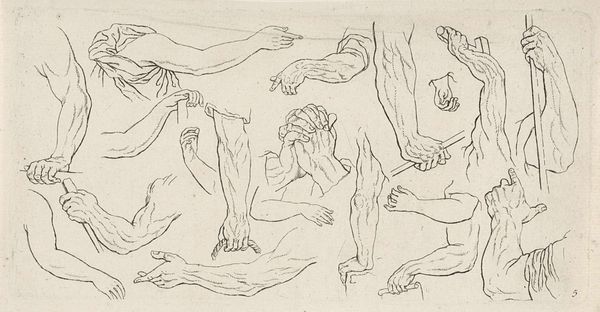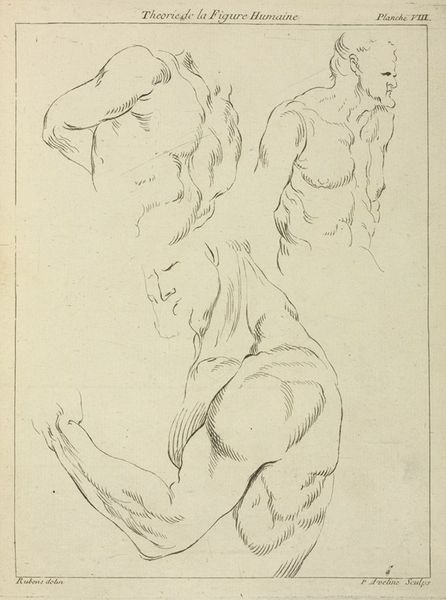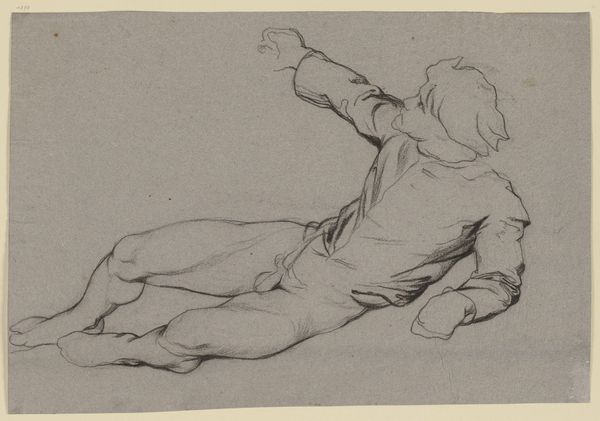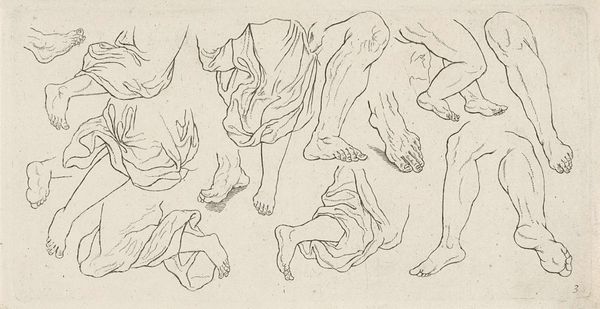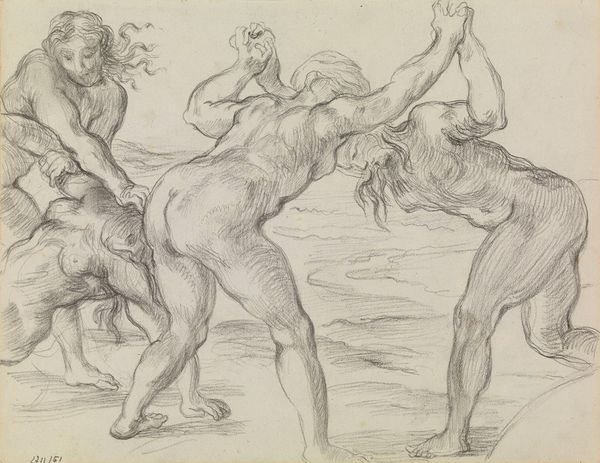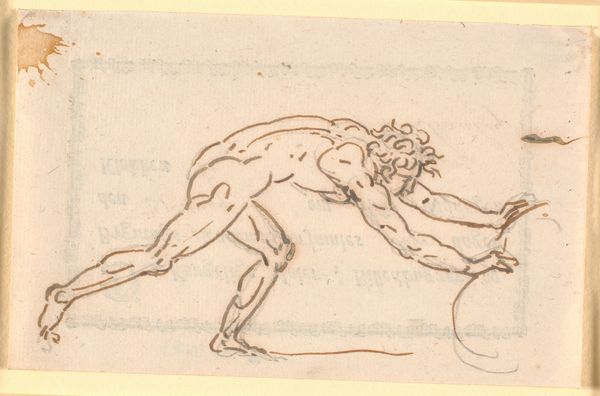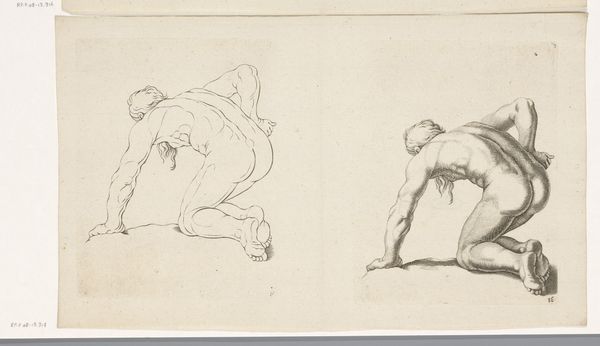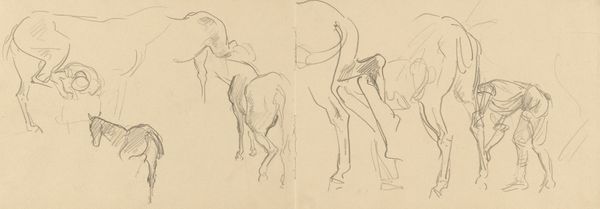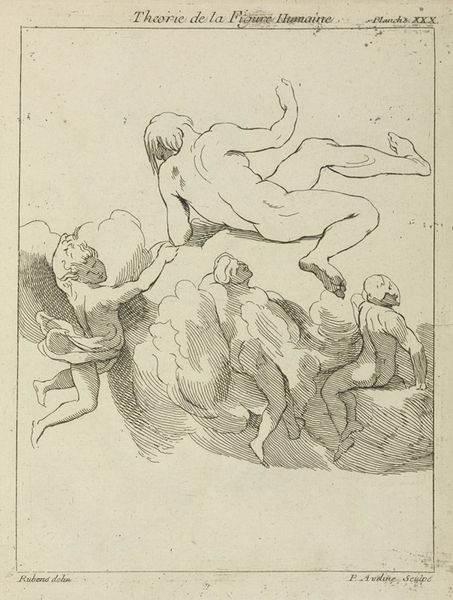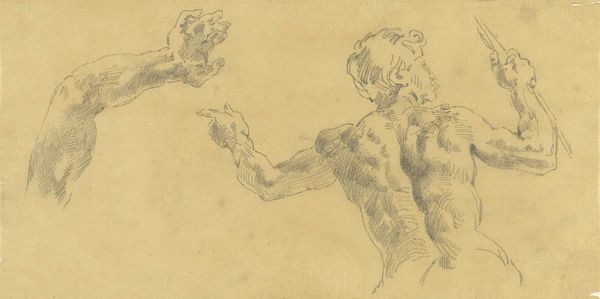
drawing, pen
#
drawing
#
comic strip sketch
#
imaginative character sketch
#
figuration
#
personal sketchbook
#
idea generation sketch
#
sketchwork
#
ink drawing experimentation
#
sketchbook drawing
#
pen
#
storyboard and sketchbook work
#
academic-art
#
sketchbook art
#
initial sketch
Dimensions: height 94 mm, width 190 mm
Copyright: Rijks Museum: Open Domain
Curator: Here we have “Studies van mannelijke benen,” or "Studies of Male Legs," a pen drawing dating from the period 1710 to 1767, created by Leonard Schenk. Editor: At first glance, I'm struck by how unfinished yet expressive these studies appear. It feels like we're peeking into the artist's sketchbook, capturing a moment of anatomical exploration. Curator: Indeed, Schenk seems to have been deeply engaged with the human form, focusing intently on the intricacies of musculature and proportion. Notice how the artist utilized line weight and layering of strokes to define form. One can imagine Schenk making such sketches as an engraver or an etcher. Editor: It’s fascinating to consider this work through the lens of the 18th century’s understanding of masculinity and the body. While seemingly objective studies, these sketches reflect the era's values and aesthetics tied to idealized male physicality, and the role it played in colonial European dominance of that period. Curator: Absolutely, and the means by which an image of such figures circulated could, and still do, say a lot about contemporary values. It is the material reality of ink and paper allowing such imagery to endure over time, with various printing processes like etching facilitating reproduction on a grander scale, shaping taste and informing artistic production. Editor: Thinking about the reproduction process you brought up—it's tempting to imagine the end uses, for instance, this sketch eventually turning into idealized prints. Were these mass-produced images affordable and accessible, allowing ideas around able-bodiedness, maleness and beauty to be dispersed among specific socio-economic strata, as a tool? Curator: Most definitely. From a maker's standpoint, these were skills meant for professional use and the commercial art market during a burgeoning mercantile economy. Each figure drawing here represents a unit of work; the price one could ask for these images speaks to questions of how artistic skill was, and still is, valued as a service. Editor: The legacy continues, too. What can this drawing teach us about looking critically today, about how standards around representation are created and sustained, even now in an era when social media dictates those things? Curator: Seeing Schenk's labor reminds us that the art historical past has a life outside the museum wall. His work exists on paper due to supply chains, manual craft, artistic labor and intellectual exchange. All are important when examining what seems to be only a drawing. Editor: True—thinking about these legs is also about the shoulders and backs of those who shaped the norms we're still dismantling and reconstructing. Thanks for this deeper reading into these beautiful yet historically loaded images.
Comments
No comments
Be the first to comment and join the conversation on the ultimate creative platform.
